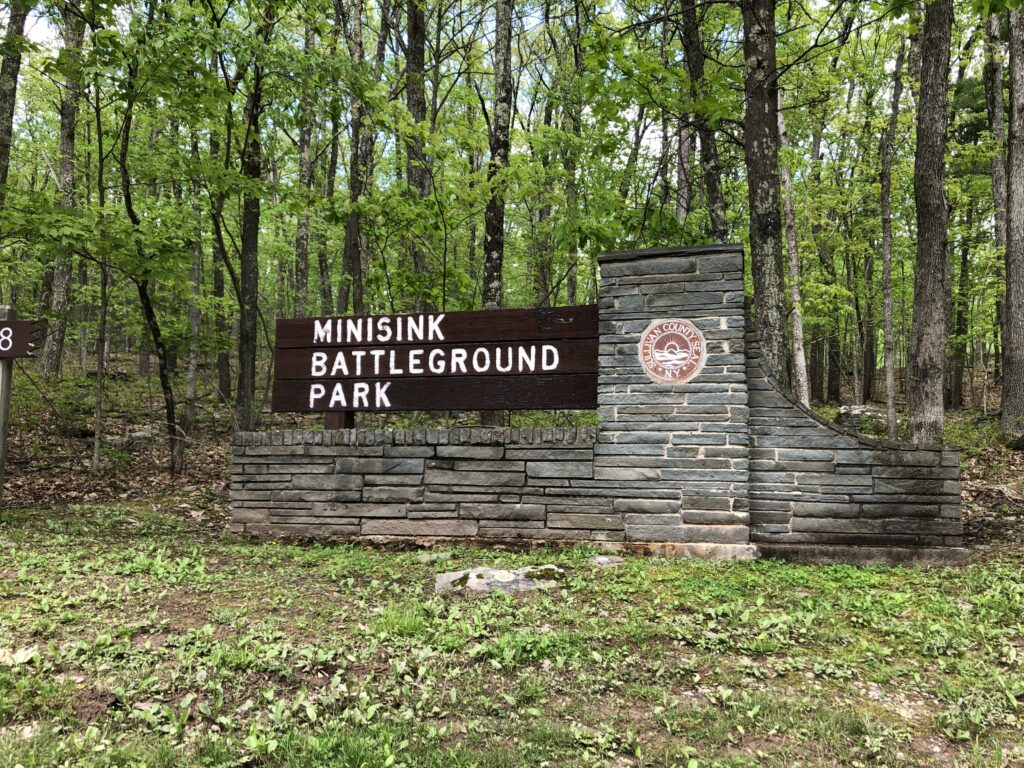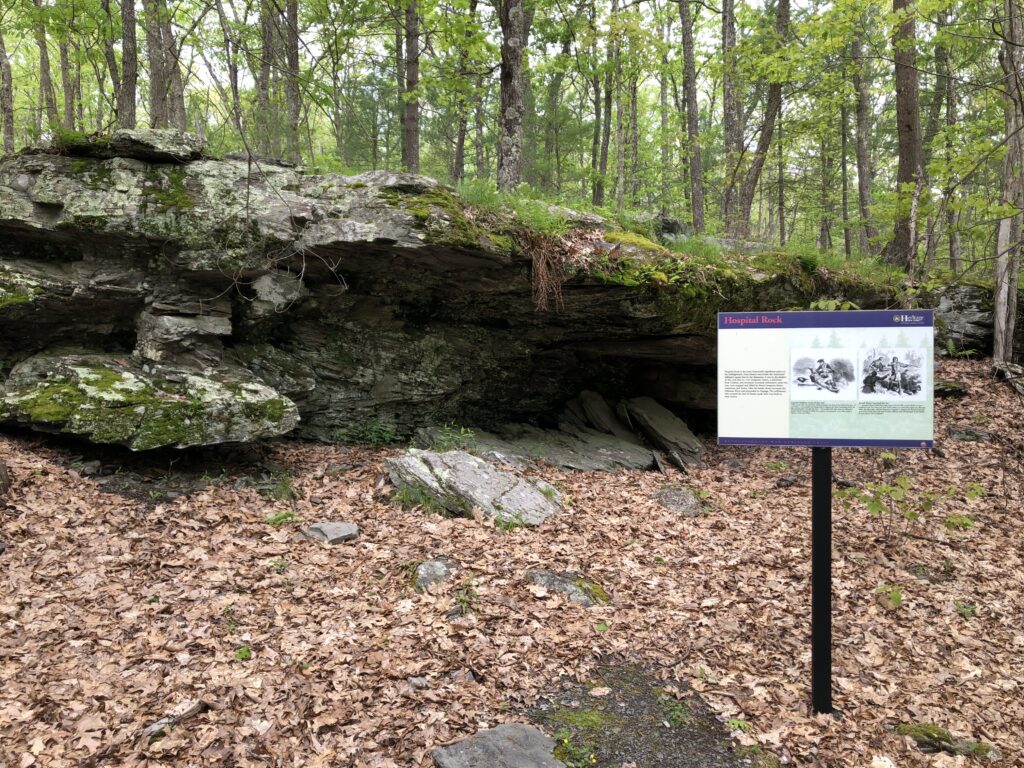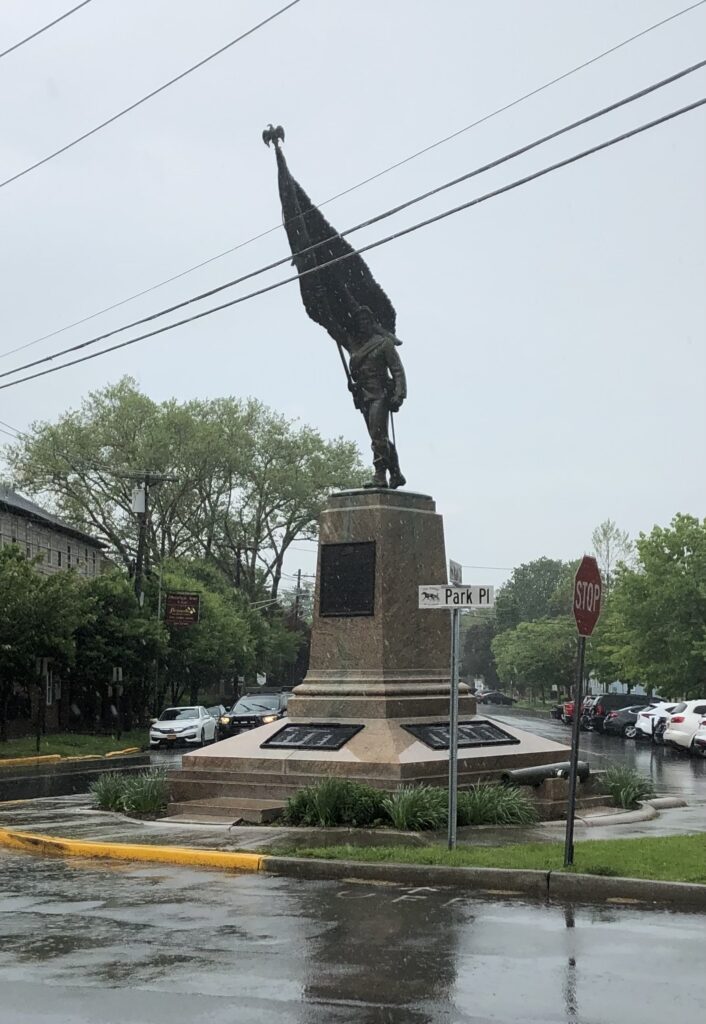Battlefield Visits, Revolutionary War Edition: Minisink
From my travels, May 20, 2019.
Regular readers will know that my first history-nerd love is the American Civil War, but when I’m traveling through an area, I’m happy to explore all the history that place has to offer. It’s a great way to learn new things and expand your horizons. And it’s really fun when you can find new connections in history that you never knew about.
That’s what happened as I drove through Pennsylvania on the way to the site of the Battle of Minisink.

My route took me across the Delaware River at the town of Lackawaxen, PA. The one-lane vehicle bridge that I drove across began its life as a suspension aqueduct that carried the Delaware & Hudson Canal traffic across the river, cutting down transit times and removing a bottleneck that kept the canal competitive with upstart railroads in the mid 19th century. The structure was designed by John A. Roebling, the great engineer who is most famous for designing the Brooklyn Bridge. His son, Washington A. Roebling – who supervised the completion of that project after his father’s death – had served as a staff officer during the Civil War for another great engineer: Brig. Gen. Gouverneur K. Warren. Like I always say: history is absolutely EVERYWHERE.

The history that I was actually trying to find was just up the hill from the crossing on the New York side of the river. The site of the Battle of Minisink is now a county park and seems to be fairly well-preserved. It consists of a wooded hilltop with a small interpretive shelter and several monuments and markers. This was a relatively minor skirmish in the course of the war – only about 200 total combatants were involved – but it was comparatively bloody. The British forces overwhelmed and surrounded the small colonial militia force that attempted to hold out. Those who weren’t able to flee were not afforded the luxury of becoming prisoners.

One of the markers I read on the field mentioned that there was a monument to the battle in nearby Goshen, NY – which happens to be one of my favorite towns in this part of the country because of its connection to the 124th NY who fought on Houck’s Ridge at Gettysburg. I figured that a Revolutionary monument was also probably worthy of a visit. Especially because according to the markers, at least some of the dead from this field were buried underneath it.

And while I’m in Goshen, I have to re-visit their lovely monument to the 124th NY “Orange Blossoms” regiment, who took extremely heavy losses in the Triangular Field at Gettysburg on July 2, 1863.

Despite the occasional rain shower I encountered during the day, it was an excellent leg of my New York trip. Stumbling onto historical connections that I never knew existed is one of the most satisfying feelings, and it’s why I’ll always look forward to stopping for every roadside historical marker I come across.